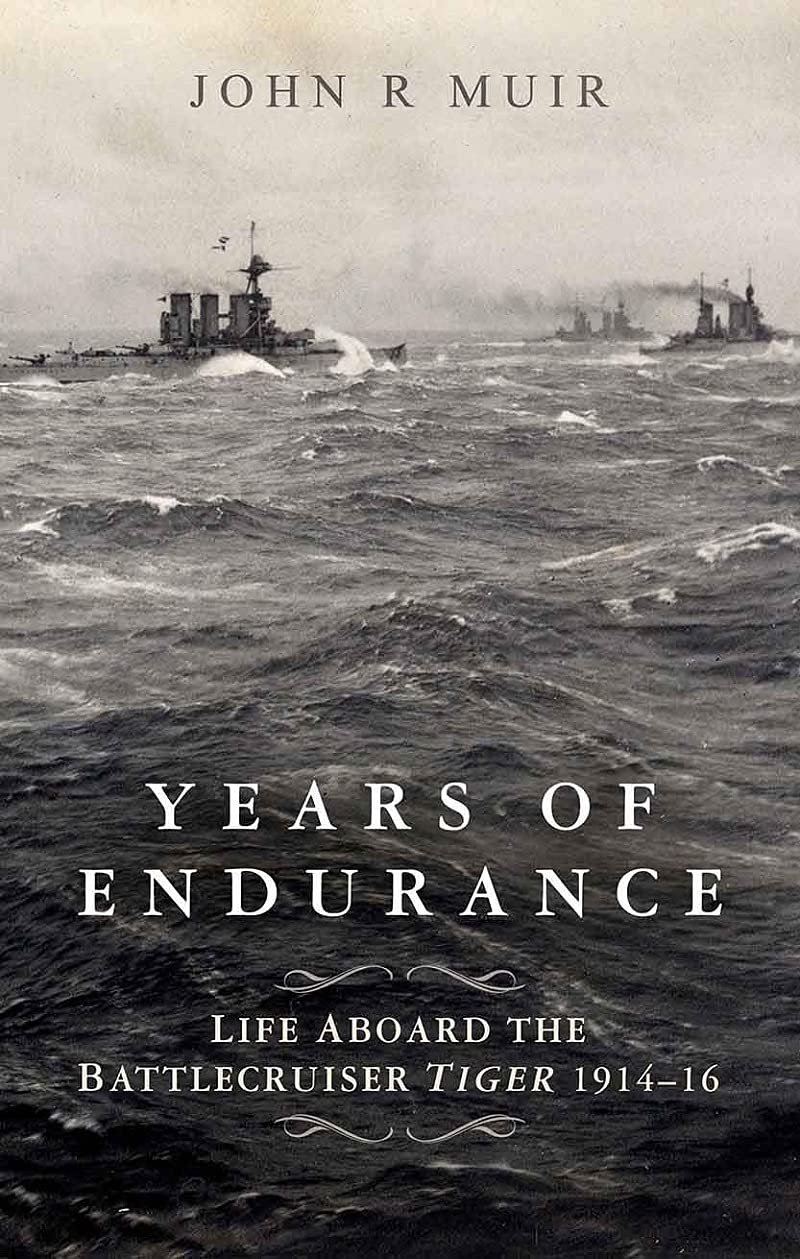Years of Endurance: Life Aboard the Battlecruiser Tiger 1914-16
John R. Muir
 John Muir’s reminiscences of service ashore and afloat during the early years of the Great War were originally published in 1937. Seaforth has reprinted them and added a new introduction by Surgeon Rear-Admiral (Ret.) Mike Farquharson-Roberts.
John Muir’s reminiscences of service ashore and afloat during the early years of the Great War were originally published in 1937. Seaforth has reprinted them and added a new introduction by Surgeon Rear-Admiral (Ret.) Mike Farquharson-Roberts.
It is not clear when Muir’s account was written, nor is there any reference to his having kept a diary through the events he recounts. Thus the reader cannot be sure whether the numerous conversations scattered throughout his narrative were reconstructed from notes taken shortly afterward or committed to a diary at the time, or whether they were “recreated” from memory long after the fact, a caveat that extends to the narrative as a whole. All of this is meant to say that while most of the overall picture that Muir presents is probably accurate, the details may not be all that trustworthy. In some cases, too, the overall picture leaves something to be desired, in particular the chapter devoted to the battlecruiser action at Jutland, an account that Farquharson-Roberts rather charitably terms “semi-fictionalized.”
Lest the foregoing imply that Muir’s book does not warrant reading, it also boasts numerous laudable qualities and provides a participant’s-eye view of the battles of the Dogger Bank and Jutland far removed from those found in most accounts of the latter battle, focusing as they do on the view from the bridge. As Muir makes clear, the view, such as it was, from the medical officer’s station was very different. Indeed, like the vast majority of Tiger’s crew he had no view at all of the battle itself, being at his station far below the waterline providing care for the ship’s men wounded during the action. Hence, the explosion of Queen Mary, next in line ahead of Tiger, was felt rather than seen.
Muir’s perspective on service at sea and ashore—as Senior Medical Officer at Chatham at the war’s outbreak he had to improvise system for examining the flood of reservists who descended on the port and also to create temporary hospital space out of a former sailors’ hostel for the anticipated flood of men wounded in action—is one not often encountered in naval history and is valuable for that fact alone. Moreover, a medical officer did and does have an unusually broad social experience in the service. Muir was on the one hand a member of wardroom, thus rubbing elbows with most of the executive branch, the engineering officers, the other professional officers (chaplain, paymaster, school instructor), Marine officers and, in the circumstances of war, several reserve or volunteer reserve lieutenants. On the other his duties brought in into regular and intimate contact with men of the lower deck, and although it was socially impossible to bridge the gulf in rank he did, along with the chaplain, serve as one of the ship’s de facto “welfare officers,” as Farquharson-Roberts puts it.
Muir’s memoir also makes for an instructive, entertaining, well-written, and often amusing read, chock-full of anecdotes and insights into the Royal Navy’s early twentieth-century medical service. Especially recommended to those interested in that service, the Great War at sea, and HMS Tiger. Those engaged in scholarly research should use caution when citing it, however.
- Introduction by Mike Farquharson-Roberts
- Barnsley: Seaforth Publishing, 2020
- Annapolis: Naval Institute Press, 2020
- 6-1/2” x 9-1/2”, hardcover, xviii + 202 pages
- Photographs. $34.95
- ISBN: 9781399017206
Reviewed by: John Beeler, University of Alabama
